 May 21, 2020 John E. Ross, KD8IDJ, Editor
| ||||||
COVID-19 Impact & News Find the latest news and information on the impact of the coronavirus pandemic to ARRL members and our global amateur radio community. Amateur Radio Gearing Up for Predicted "Above Average" Atlantic Hurricane Season Long-range forecasts for the 2020 Atlantic Basin hurricane season, which begins on June 1 and extends until November 30, anticipate above-normal activity. The National Hurricane Center (NHC) 2020 outlook calls for a season about 140% more active than average, with four Category 3 to Category 5 hurricanes. The 2019 season saw three major hurricanes (out of six). "The above-average prediction is largely due to the hot Atlantic and Caribbean waters and lack of a substantial El Niño in the Pacific," the The NHC Annual Station Test -- to check readiness of amateur radio stations and operators -- takes place on Saturday, May 30, 1300 - 2100 UTC. The NHC's WX4NHC will be on the air, marking its 40th year of public service at the NHC. Julio Ripoll, WD4R, the Assistant Amateur Radio Coordinator at the NHC, said the event offers an opportunity for radio amateurs worldwide to exercise the sorts of communications available during severe weather. "We will be making brief contacts on many frequencies and modes, exchanging signal reports and basic weather data -- sunny, rain, temperature, etc.) with any station in any location," Ripoll said. Operation will be on HF, VHF, UHF, APRS, and Winlink. WX4NHC will center its activity on the Hurricane Watch Net (HWN) frequencies of 14.325 MHz and 7.268 MHz, depending on propagation, but will operate elsewhere as conditions dictate. WX4NHC will also operate on the VoIP Hurricane Net from 2000 until 2100 UTC. Dr. Philip J. Klotzbach et al of the Colorado State University (CSU) Department of Atmospheric Science cite a variety of factors that led them to conclude this hurricane season could get serious. Pointing to the "somewhat above normal" tropical Atlantic sea-surface temperatures, the scientists estimate "about eight hurricanes," four of them major, during the 2020 season. "I must say, I'm not liking what I'm seeing," reacted Hurricane Watch Net Manager Bobby Graves, KB5HAV, pointing to additional extended "Since 2014, the Hurricane Watch Net has been very busy," Graves told ARRL. "We've had 20 net activations for 19 hurricanes and one tropical storm. Since 2015, we've worked nine major land-falling hurricanes, including four land-falling Category 5 storms." Graves pointed out that the past six hurricane seasons not only were busy and historic but very deadly, and he's hoping the 2020 hurricane season will not turn in a repeat performance. Director, Vice Director Nominations Invited in Five ARRL Divisions Nominations are being invited in five ARRL Divisions for the volunteer positions of Director and Vice Director, for 3-year terms that start January 1, 2021. Affected Divisions are Atlantic, Dakota, Delta, Great Lakes, and Midwest. A nominee must be at least 21 years old, hold a valid amateur radio license, and have been a full ARRL member for a continuous term of at least 4 years immediately preceding nomination. Nominees will be asked to provide information concerning employment, ownership, investment interests, and other financial arrangements to ensure compliance with the Conflict of Interest Policy spelled out in the ARRL Articles of Association and Bylaws. The incumbent Directors and Vice Directors in the affected Divisions are:
Prospective candidates or those planning to nominate an individual should obtain an official nominating petition form, available to any full If only one eligible candidate is nominated for an office, he or she will be declared elected by the Ethics and Elections Committee. Balloting in Divisions where more than one candidate qualifies to stand for election as Director or Vice Director will take place this fall, with ballots counted on November 20. The formal "Call for Nominations for ARRL Director and Vice Director" appears on page 69 of the July 2020 issue of QST. Planning Your ARRL Field Day 2020 Operation For most of us, ARRL Field Day 2020 is going to look quite different than it has in past years. Considering the impact of social distancing due to the COVID-19 pandemic, many radio clubs and large groups will not be gathering in their usual Field Day locations this year. Here are some tips and suggestions to help participate in amateur radio's largest annual on-air event under these unusual circumstances. Don't Forget 6 Meters Field Day is a non-adjudicated operating event and not a This includes 6 meters, which often offers significant propagation enhancements around the time of Field Day weekend. The band is available to amateurs holding a Technician-class license or higher. If you have an HF/VHF/UHF multi-mode transceiver, try making SSB, CW, or digital contacts on 6 meters. Even a simple vertical or dipole will allow you to experience the "magic band." Activities for Techs One suggestion for clubs to consider in order to increase participation among their Technician-class members is to schedule specific times when these club members will monitor designated VHF and UHF simplex frequencies for Field Day activity. (Avoid published national FM simplex calling frequencies; repeaters are prohibited for Field Day contacts.) This way, members having equipment capable of VHF/UHF-only operation may be able to participate from home or a vehicle. Clubs can choose a list of frequencies and schedule times in advance. On HF, Technician-class licensees have CW privileges on 80, 40, and 15 meters, as well as RTTY/data and SSB phone privileges on 10 meters. If you aren't a CW operator, try calling CQ on 10-meter SSB in the late afternoon and early evening on Saturday to see if conditions are favorable for long-distance communications. Try experimenting with a simple wire antenna for 10 meters. You might discover that the band can offer plenty of unexpected propagation. Set Up for Digital Modes You might want to explore using FT4/FT8 (or other) digital modes on 10 meters, 6 meters, or even on VHF/UHF. These modes offer an opportunity to make weak-signal contacts when band conditions often do not support voice communication. There have been reports of some great 6-meter openings in recent weeks, and these are likely to occur more frequently as summer approaches. Setup is relatively straightforward. You'll need a computer and a digital interface to connect the radio to the computer, and you'll need to download one of the digital mode software packages, such as the free WSJT-X suite, which incorporates FT8 and FT4. Software should support the ARRL Field Day exchange (WSJT-X version 2.0 or later, for example). ARRL Field Day rules place a premium on "developing skills to meet the challenges of emergency preparedness as well as to acquaint the general public with the capabilities of amateur radio." Field Day 2020 is June 27 - 28. The Excitement of Ham Satellites Another area to explore is satellite operation. Many hams have had success making contacts via the FM satellites with just a VHF/UHF handheld radio and a small handheld directional antenna. You'll need a multi-mode VHF/UHF transceiver for the linear (SSB and CW) satellites. To determine when a satellite will be making a pass over your location, visit AMSAT's Online Satellite Pass Prediction page. An Opportunity for Learning ARRL Field Day 2020 may be the year you decide to participate solo, or with other members of your household. You may want to focus on expanding your knowledge base and experiment with new modes or bands that you never thought of using before. If you're a mentor to a newer ham, Field Day can be an opportunity to share some of your knowledge with them, as well as for you to expand your own operating horizons. This might be the year to leave your Field Day comfort zone and try something new! ARRL Podcasts Schedule
The On the Air and Eclectic Tech podcasts are sponsored by Icom. Both podcasts are available on iTunes (iOS) and Stitcher (Android), as well as on Blubrry -- On the Air | Eclectic Tech. ARRL Invites Applications for Awards and Programs Assistant ARRL is inviting applications to fill the position of Awards and Programs Assistant at ARRL Headquarters in Newington, Connecticut. This is a full-time, non-exempt opening in the Radiosport and Field Services Department. The pay range is from $16.08 to 19.30 per hour. The Awards and Programs Assistant will help with all Radiosport and Field Services Department activities, with an initial priority on Logbook of The World (LoTW) support. Other duties may involve supporting The successful candidate will possess a well-rounded knowledge of amateur radio, an Amateur Extra-class license, and 2 years of operating experience; the ability to quickly understand and explain software functionality, and proficiency in keyboarding and data entry. This individual should have attained DXCC, regularly submit contest logs to sponsors, use LoTW, and be able to resolve issues efficiently. A bachelor's degree is preferred. The ideal candidate will have excellent interpersonal, telephone, and listening skills and be proficient in public presentations. Some overnight travel may be required. To apply, submit a cover letter and resume via mail, email, or fax to ARRL, c/o Monique Levesque, 225 Main St., Newington, CT 06111 (fax 860-594 -0298). For complete position information, visit ARRL Employment Opportunities and scroll down to "Awards and Programs Assistant." ARRL is an equal opportunity employer. The K7RA Solar Update Tad Cook, K7RA, Seattle, reports: Still no sunspots to report. Spaceweather.com reported on May 20 that the current stretch of days with no sunspots has now reached 18, and with that, the 2020 percentage of days with no sunspots has risen to 77% -- equal to 2019. Until May 15, that statistic stood at 76%.
Predicted solar flux for the next 45 days is 70 -- every day from May 21 through July 4. Predicted planetary A index is 5 on May 21 - June 14; 8 on June 15 - 16, and 5 on June 17 - July 4. In this Friday's bulletin, look for multiple reports heralding the start of E-skip season. Sunspot numbers for May 14 - 20 were 0, 0, 0, 0, 0, 0, and 0, with a mean of 0. The 10.7-centimeter flux was 67.6, 67.8, 69.4, 69.6, 70.2, 68.7, and 69.6, with a mean of 69. Estimated planetary A indices were 3, 4, 4, 3, 4, 5, and 3, with a mean of 3.7. Middle latitude A index was 3, 4, 4, 3, 5, 6, and 3, with a mean of 4. A comprehensive K7RA Solar Update is posted Fridays on the ARRL website. For more information concerning radio propagation, visit the ARRL Technical Information Service, read "What the Numbers Mean...," and check out K9LA's Propagation Page. A propagation bulletin archive is available. Monthly charts offer propagation projections between the US and a dozen DX locations. Share your reports and observations. Just Ahead in Radiosport
See the ARRL Contest Calendar for more information. For in-depth reporting on amateur radio contesting, subscribe to The ARRL Contest Update via your ARRL member profile email preferences. ARISS Multipoint Telebridge Contact via Amateur Radio Concept Proving Successful Judging by the outcome of two tests so far, the new Amateur Radio on the International Space Station (ARISS) Multipoint Telebridge Contact via Amateur Radio concept appears to be a winner. ARISS completed the second test of the new-style radio contact, called Multipoint Telebridge Contact via Amateur Radio, on May 15, when Airdrie Space Science Club members in Airdrie, Alberta, Canada, interviewed "What makes this contact a little different from the usual ARISS contact is [that] everyone involved will be speaking from their homes in Canada, as we all shelter in place," said the contact moderator, John Kludt, K4SQC, in introducing the event. The multipoint telebridge concept was developed to make it possible for students -- now at home and engaged in distance learning due to the COVID-19 pandemic -- to take part in scheduled ARISS contacts. An ARISS telebridge ground station operated by John Sygo, ZS6JON, near Johannesburg, South Africa, made direct contact with NA1SS onboard the ISS, which was passing overhead. Sygo then patched two-way audio into the telebridge network for distribution to each student's home by telephone.
Each student then took turns asking questions of Cassidy, and their families, faculty members, and the public could also listen from home. One of the participants, Lucas, wanted to know how the COVID-19 pandemic has affected life aboard the space station. "The pandemic has affected us because it's affected our families," Cassidy responded. "Our daily life here on the space station is largely the same, with or without the pandemic." The initial multipoint telebridge contact earlier this month, while successful, suffered from some issues on the space station that were unrelated to the new multipoint system. During the more-than 11-minute contact on May 15, some of the students got to ask more than one question. Prior to the restrictions imposed by the COVID-19 pandemic, the Canadian students had engaged in lessons about space and radio communication, such as launching balloons carrying ham radio payloads and building model rockets to launch. -- Thanks to ARISS Federal Judge Okays Retrieval of Titanic Marconi Wireless Equipment A US federal judge in Virginia has given permission to retrieve the ill-fated RMS Titanic's Marconi wireless gear, which transmitted distress calls from the sinking ocean liner during its maiden voyage. Judge Rebecca Beach Smith of the US District Court in Norfolk ruled that the radio gear is historically and culturally important and could "The Marconi device has significant historical, educational, scientific, and cultural value as the device used to make distress calls while the Titanic was sinking," Judge Smith wrote in her ruling. She said the company would be permitted "minimally to cut into the wreck" to access the radio room. David Concannon, a lawyer for R.M.S Titanic Inc., which the court has recognized as the steward of the vessel's artifacts, said the company would try to avoid cutting into the ship, noting that the radio room may be reachable via a skylight that was already open. More legal wrangling may lie ahead. The National Oceanic and Atmospheric Administration (NOAA) contends that the retrieval expedition is still prohibited under US law and under an international agreement between the US and the UK. R.M.S Titanic has said the radio transmitter could unlock some of the secrets about a missed warning message and distress calls sent from the ship. "It tells an important story," Concannon said. "It tells of the heroism of the operators that saved the lives of 705 people. They worked until water was lapping at their feet."
In an April court filing, NOAA argued against the salvage effort, saying that any benefit to be realized from cutting into the vessel to recover the Marconi equipment would not be "worth the cost to the resource and not in the public interest." RMS Titanic sought permission to carry out what it called a "surgical removal and retrieval" of the Marconi radio equipment. As might be expected, the deteriorating Marconi equipment is in poor shape after more than a century under water. The undersea retrieval would mark the first time an artifact was collected from within the Titanic, which many believe should remain undisturbed as the final resting place of some 1,500 victims of the maritime disaster. The wreck sits on the ocean floor some 2 1/2 miles beneath the surface, and remained undiscovered until 1985. R.M.S. Titanic said it plans to use a manned submarine to reach the wreck and then deploy a remotely controlled sub to retrieve the radio equipment. Announcements
Venerable AO-7 Satellite Continues to Deliver The nearly 46-year-old AO-7 amateur satellite made a remarkable contact possible on May 4 between Diego Feil, LW2DAF, in Buenos Aires, Argentina (GF05rk), and Tom Ambrose, ZS1TA, in Cape Town, South Africa (JF95fx). The contact spanned 4,329 miles across the Both stations had been watching orbital predictions for several weeks, and the times they could "see" AO-7 at the same time occurred only occasionally. Electrical noise, particularly in Cape Town, had hampered earlier efforts, but on the morning of May 4, noise levels were low, and a perfect contact was possible with a full exchange of call signs and reports. In 2016, Dave Swanson, KG5CCI, in Arkansas, and Eduardo Erlemann, PY2RN, in Brazil, achieved a distance milestone on AO-7, completing a scheduled contact that covered a calculated distance of just over 4,979 miles, which Swanson at the time said was "way beyond the theoretical range of AO-7" and a feat that "the math said shouldn't be possible." -- Thanks to AMSAT News Service Upcoming ARRL Section, State, and Division Conventions Note: Many conventions and hamfests have been canceled or postponed due to the coronavirus pandemic. Check the calendar of canceled events on the ARRL website.
Find conventions and hamfests in your area
. .
Subscribe to...
Free of charge to ARRL members...
| ||||||
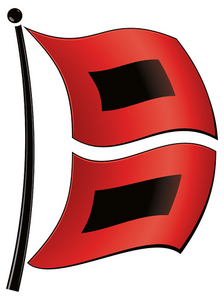 NHC explained, noting that the combination of a busy hurricane season and the ongoing COVID-19 pandemic could create a nightmare scenario for affected areas. FEMA and local emergency management agencies are already issuing COVID-19 guidelines for hurricane shelters, which include face masks and social distancing.
NHC explained, noting that the combination of a busy hurricane season and the ongoing COVID-19 pandemic could create a nightmare scenario for affected areas. FEMA and local emergency management agencies are already issuing COVID-19 guidelines for hurricane shelters, which include face masks and social distancing..jpg) forecasts posted by Tropical Storm Risk (TSR), the University of Arizona, and North Carolina State University. The TSR forecast calls for three major hurricanes, while the University of Arizona and North Carolina State predict between three and five major hurricanes.
forecasts posted by Tropical Storm Risk (TSR), the University of Arizona, and North Carolina State University. The TSR forecast calls for three major hurricanes, while the University of Arizona and North Carolina State predict between three and five major hurricanes.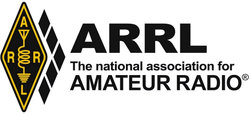 member living in an affected Division. Send a written request to ARRL to
member living in an affected Division. Send a written request to ARRL to 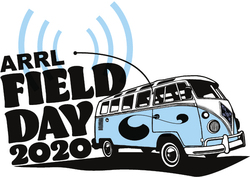 "full speed ahead" contest. It is also not just an HF event. All amateur radio bands above 50 MHz may be used during the event too.
"full speed ahead" contest. It is also not just an HF event. All amateur radio bands above 50 MHz may be used during the event too.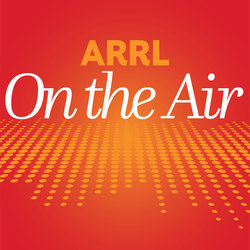 The latest episode of the On the Air podcast (Episode 5) focuses on the various types of modulation and tips on go-kits. The On the Air podcast is a monthly companion to On the Air magazine, ARRL's magazine for beginner-to-intermediate ham radio operators.
The latest episode of the On the Air podcast (Episode 5) focuses on the various types of modulation and tips on go-kits. The On the Air podcast is a monthly companion to On the Air magazine, ARRL's magazine for beginner-to-intermediate ham radio operators.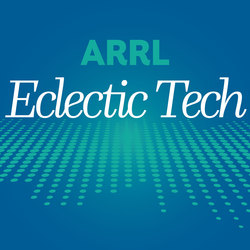 The latest episode of the Eclectic Tech podcast (Episode 8) includes a discussion of 10-meter FM and an interview with Pascal Villeneuve, VA2PV, about "hotspots" for DMR, D-STAR, and Yaesu System Fusion.
The latest episode of the Eclectic Tech podcast (Episode 8) includes a discussion of 10-meter FM and an interview with Pascal Villeneuve, VA2PV, about "hotspots" for DMR, D-STAR, and Yaesu System Fusion.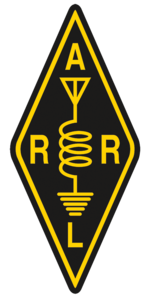 DXCC and other awards programs, W1AW station operations, and contest program and field service support. This individual would also handle special projects that may be assigned and represent ARRL in public forums worldwide.
DXCC and other awards programs, W1AW station operations, and contest program and field service support. This individual would also handle special projects that may be assigned and represent ARRL in public forums worldwide.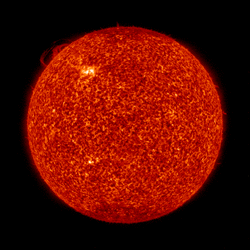 Average daily solar flux for the week rose to 69 from last week's average of 68.5. The average planetary A index declined from 4.1 to 3.7, while the average mid-latitude A index shifted from 4.7 to 4.
Average daily solar flux for the week rose to 69 from last week's average of 68.5. The average planetary A index declined from 4.1 to 3.7, while the average mid-latitude A index shifted from 4.7 to 4.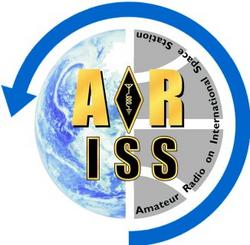 International Space Station Commander Chris Cassidy, KF5KDR, via ham radio.
International Space Station Commander Chris Cassidy, KF5KDR, via ham radio.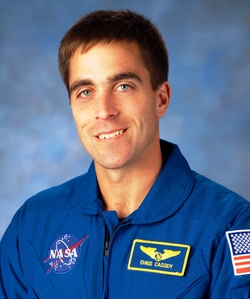
.jpg) soon be lost within the rapidly decaying wreck. The Titanic sank in 1912 some 370 miles off the coast of Newfoundland after striking an iceberg.
soon be lost within the rapidly decaying wreck. The Titanic sank in 1912 some 370 miles off the coast of Newfoundland after striking an iceberg.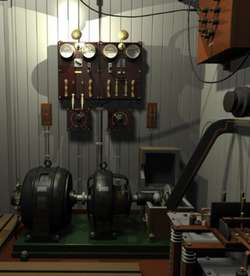
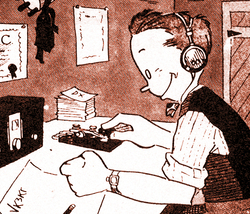 organized the Gulf Coast Hurricane Special Event 2020, May 27 - 29. Special event stations for the five states most often impacted by Gulf Coast hurricanes will operate on 3.862, 7.240, 14.255, and 21.300 MHz.
organized the Gulf Coast Hurricane Special Event 2020, May 27 - 29. Special event stations for the five states most often impacted by Gulf Coast hurricanes will operate on 3.862, 7.240, 14.255, and 21.300 MHz.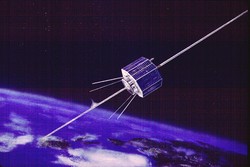 South Atlantic, with both stations aiming at only 2 or 3 degrees above the horizon.
South Atlantic, with both stations aiming at only 2 or 3 degrees above the horizon.







